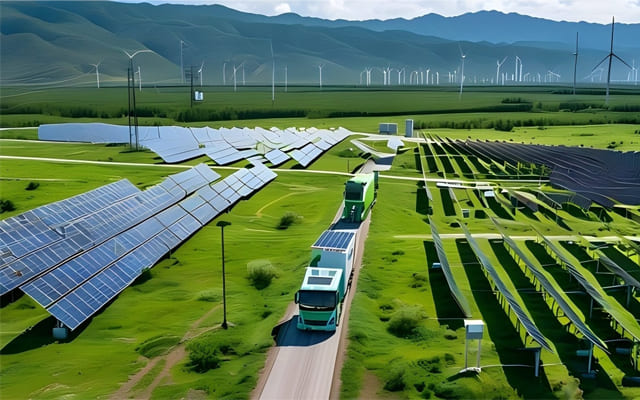With energy costs rising and power grids becoming increasingly unreliable, more and more farmers are turning to independent and renewable energy solutions. Among them, the off-grid wind and solar hybrid system has become a top choice for farms and ranches seeking stable, all-day electricity.
However, a system’s efficiency depends on more than just its components — it relies heavily on how electricity is prioritized and distributed throughout the day.
✅ What Is an Off-Grid Wind and Solar Hybrid System?
An off-grid wind and solar hybrid system combines wind turbines and photovoltaic panels with energy storage (battery banks) and intelligent controllers to provide reliable power in areas without access to the utility grid.
Common farm applications include:
-
Remote farms and ranches
-
Irrigation pumping and livestock water systems
-
Poultry or dairy barn lighting and ventilation
-
Smart surveillance and perimeter security systems
⚙️ 24-Hour Energy Dispatch Logic in Hybrid Systems
To ensure continuous operation and maximum energy utilization, modern off-grid hybrid renewable energy systems rely on intelligent priority scheduling, adjusting power sources based on real-time weather conditions and system status. These priority rules vary by time of day — especially between daytime and nighttime.
☀️ Daytime: Solar First, Wind & Battery Support
During sunny hours, the system runs in a PV-dominant mode, with energy flows prioritized as follows:
-
Solar power is the primary energy source, directly supplying real-time farm loads like irrigation pumps, lights, and ventilation fans.
-
If solar generation exceeds current consumption, the surplus charges the battery bank via MPPT charge controllers for later use.
-
Wind turbines serve as secondary sources — assisting if wind conditions are favorable, or contributing to trickle charging the battery.
-
Battery output remains on standby, only stepping in if both solar and wind input are insufficient.
🌙 Nighttime: Wind as Primary, Battery as Intelligent Backup
After sunset, the system automatically switches to wind-dominant mode, with a smart battery support strategy:
-
Wind turbines become the main power source, dynamically adjusting output based on wind speed to meet nighttime demands like lighting, sensors, or environmental controls.
-
If wind conditions are strong and steady, the system can supply loads directly, reducing strain on the battery and extending its life.
-
In low or inconsistent wind conditions, the system draws power from the battery bank to ensure stable voltage and uninterrupted operation.
-
Intelligent controllers may prioritize critical loads (like surveillance or feeding systems) based on preset thresholds and operational rules.
🔋 Role of the Battery System: Core Energy Buffer
Batteries in off-grid systems are not meant to serve as the primary source, but rather act as a central buffer for smart energy balancing:
-
Compensate for the intermittency of solar and wind energy
-
Provide power during low-generation periods (e.g., storms, cloudy days)
-
Prevent power interruptions, especially for critical farm operations
-
Reduce deep discharging cycles and extend system lifespan
🛠️ Real-World Farm Case Study
A customer from a remote dairy farm deployed a 5kW off-grid hybrid system from Elege:
-
Solar panels supplied daytime power for milking machines, water pumps, and lighting
-
The battery bank was fully charged during daylight, with wind turbines assisting
-
At night, wind turbines maintained energy supply for lighting and security
-
During wind shortages, the battery bank kicked in seamlessly to maintain stable operations
The system operated autonomously and maintenance-free, with zero outages.
🌟 Why Choose Elege?
-
✅ High-efficiency wind turbines with ultra-low startup speeds, ideal for nighttime power
-
✅ Optimized solar + wind + battery coordination, smart dispatch algorithms
-
✅ Integrated MPPT controllers and hybrid inverters
-
✅ Turnkey solutions tailored for various farm needs
For farms, energy reliability isn’t just about staying powered — it’s about reducing long-term costs and building a sustainable future. A well-designed off-grid wind and solar hybrid system isn’t only about having panels and turbines — it’s about having an intelligent power priority logic that adapts to nature and delivers stable, uninterrupted energy.

